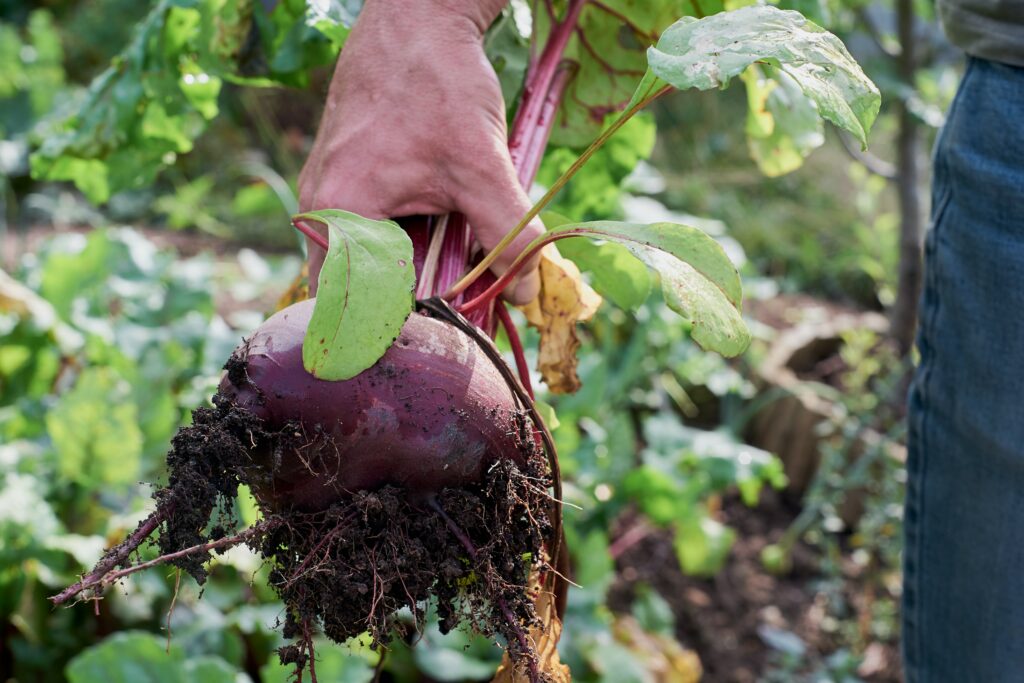
Beets – aka Beta vulgaris – are root crops that have a strong, sweet taste. They’re commonly used in soups and salads, and can also be pickled. Some varieties have lots of red dye and go great in a pot of borscht, while others do not have red dye at all. You can also eat the leaves which makes it a space-efficient crop.
How to grow beets from sowing to harvesting? In our step-by-step guide, we are going to find out how to do so the right way. For beginners, these are a great crop, since they practically grow themselves: they do well in most soils and have a high germination rate, so go ahead and give them a try!
Types of Beet Varieties
There are several varieties to choose from, including red beets with heavy pigment, white beets that look like turnips, golden beets, and red beets with white stripes on the inside. There are even baby beets that grow quickly for short growing seasons.
Red Varieties
- Boro: Fast-maturing with dark green leaves
- Bull’s Blood: a deep red root with purple leaves
- Cylindria: a cylinder-shaped beetroot that fits nicely in a jar, which makes it ideal for pickling
- Detroit Dark Red: a deep-red variety that has lots of pigment, perfect for borscht
- Lutz Green Leaf: a large-rooted beet (up to 6 inches in diameter!) that stores exceptionally well
- Red Ace: a fast-maturing beet that retains its flavor much longer in the ground than others
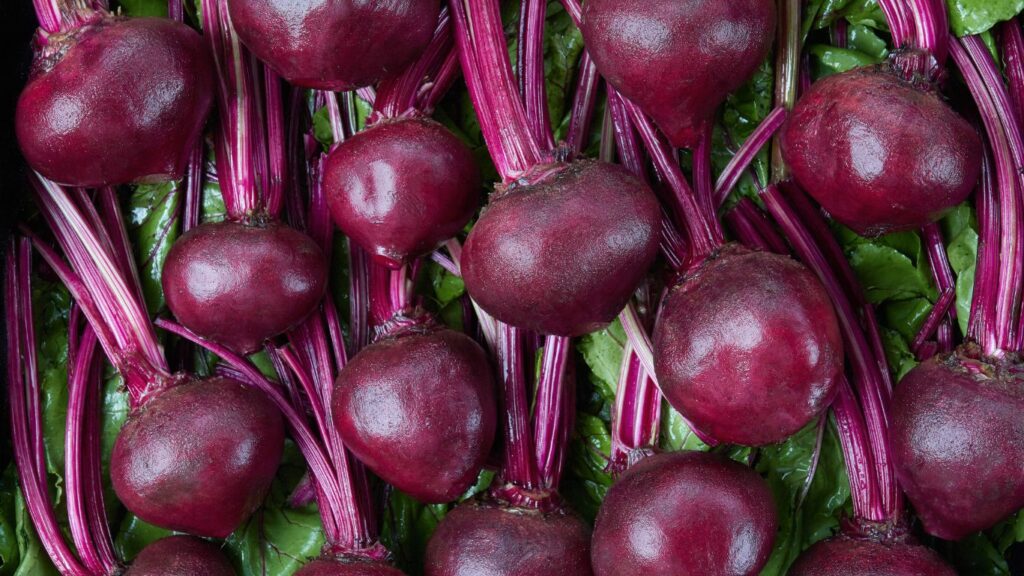
Other colors
- Golden Detroit: an heirloom cultivar that has a golden root and is known for great flavor
- Chioggia: a beetroot with red and white concentric stripes inside!
- Avalanche: a creamy-white beetroot that tastes great raw
- Sugar Beet: a white variety which is extremely high in sugar. It’s not eaten as-is, but rather processed into sugar for food manufacturing.
Ideal soil types and climate zones for beet varieties:
| Beet Type | Ideal Soil Types | USDA Zones |
|---|---|---|
| Boro | Well-drained, fertile soil | 3-10 |
| Bull’s Blood | Loamy, well-drained soil | 2-11 |
| Cylindra | Sandy, loamy soil | 2-11 |
| Detroit Dark Red | Loamy, well-drained soil | 2-11 |
| Lutz Green Leaf | Deep, well-drained soil | 2-11 |
| Red Ace | Well-drained, fertile soil | 2-11 |
| Golden Detroit | Loamy, well-drained soil | 2-11 |
| Chioggia | Well-drained, fertile soil | 2-10 |
| Avalanche | Well-drained, fertile soil | 2-10 |
Soil Preparation
The ideal soil for growing beets is a well-draining sandy loam. Work in some compost before planting, especially if your soil is highly sandy, since sand itself does not contain much for nutrients. Most soils will support beets well without the use of fertilizer, but if you have poor soil then use a 10-10-10 fertilizer for your beet patch. Potassium is necessary for the production of a large root. Most soils have enough potassium for beets but you can test it to be sure.
Beets like a soil pH level of 6 to 6.8. It can tolerate slightly more alkaline soils than this but it does not tolerate acidic soils.
Planting Beets
You can plant beet seeds in early spring before the last frost date, as long as the soil is thawed enough to be tilled. The plants are a cool-weather crop, so in southern regions, they should be planted during the cool season, not during the heat of summer.
- The seeds can be soaked in water for 24 hours to speed up germination if you live in an area with low moisture.
- Sow seeds 1/2 an inch deep, 2 to 4 inches apart. Make your rows 12 to 18 inches apart, since the leaves take up a lot of space. Each beet seed actually contains multiple seeds, so you may need to thin them, which can be done by pinching off the leaves to avoid disturbing the roots of nearby beets.
- Make sure your location has full sun.
- Beets can be started indoors but it’s not usually necessary, since they are very cold-tolerant.
- Make sure the beets get 1 inch of water per square foot per week to keep the soil moist. Like most plants, water the ground and not the leaves!
How long does it take for beets to come up after planting? It takes about 6-8 weeks to be visible on the surface. Beetroot is quite a resistant plant, so you don’t have to worry until then.
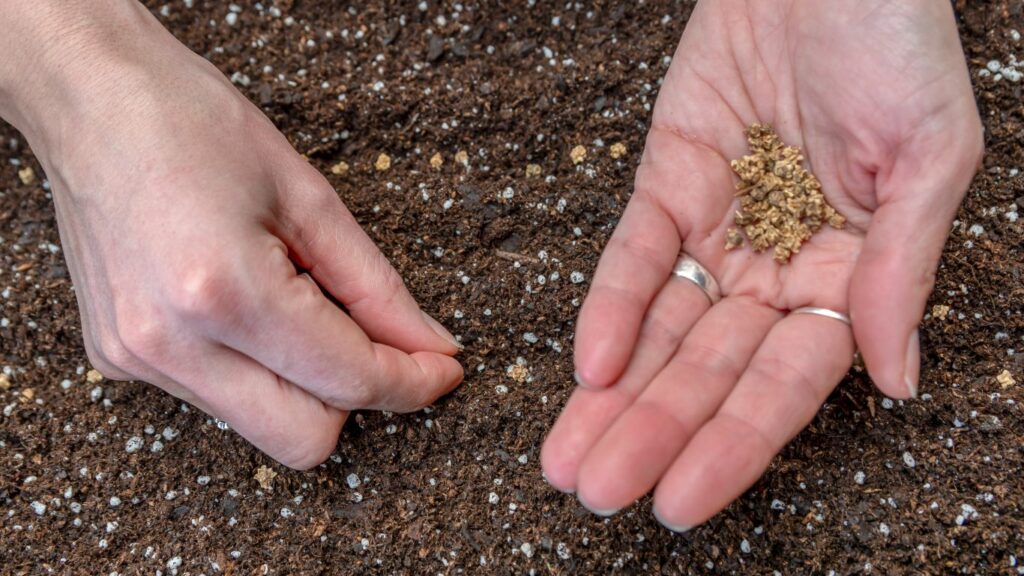
Care and Maintenance
- Mulching is always a good idea to help retain moisture and control weeds. Be diligent about pulling your weeds.
- Fertilizing beets isn’t usually necessary unless you have poor soil. For example, soils consisting mostly of sand can be low in nutrients.
- Since beets are leafy plants, they can be attacked by leaf miners, which not only consume the leaves but also spread the virus to beet curly top. Placing row covers over them will shield them from such insects as well as other pests and diseases.
- Powdery mildew is a fungus that attacks leafy plants when the leaves are too moist. This can be caused by watering directly onto the leaves instead of onto the soil. It looks like a dusting of flour on your plant leaves. One way to counter it is to make a 50-50 mixture of milk and water to apply to the leaves.
- Beet mosaic virus and beet western yellows are diseases spread by aphids. Both diseases cause leaf yellowing. There is no way to cure them and you must remove the infected plants and place them in the trash, not the compost bin.
- Companion planting is a great way to repel insects. Herbs like mint, as well as flowers like marigolds, produce a strong scent that repels many insects. You can also plant garlic, onions, carrots, and bush beans near your beets. Just don’t place these companion plants too close since beets need their space.
Harvesting Beets
The earliest time to harvest beets is when they’re 1 inch in diameter across, about 55 to 70 days after planting. It is ready to harvest at this time, however, You can allow them to grow a little larger, up to 3 inches, but if they grow too large then they may become woody and unpalatable. It depends on the species – I’ve made delicious beet borscht with beets the size of my head before. The beet greens are ready to eat 30 to 50 days after planting.
When removing the leaves, leave a few inches of stalk on the root so they won’t bleed so much during cooking. Also good to know, that beetroots can be stored in the fridge for several weeks. You can store them for longer by packing them in damp sawdust in a cool location.
For long-term storage, Beta vulgaris can be pickled or frozen. To freeze them, cook them first and then chop them into 1-inch chunks and place them in a freezer bag. You can also make soup with your beets and freeze the soup in portion-sized containers.
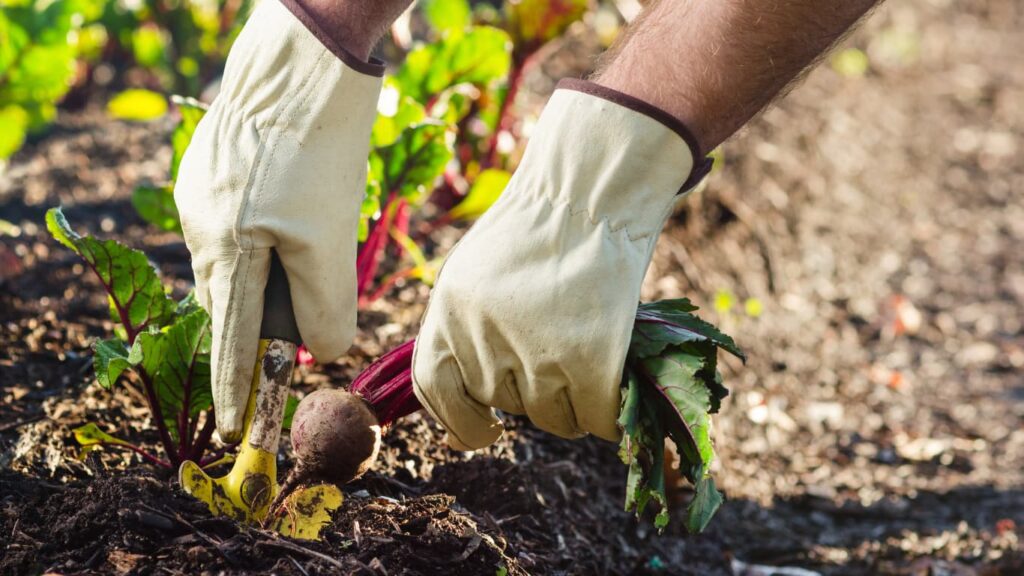
Health Benefits of Beets
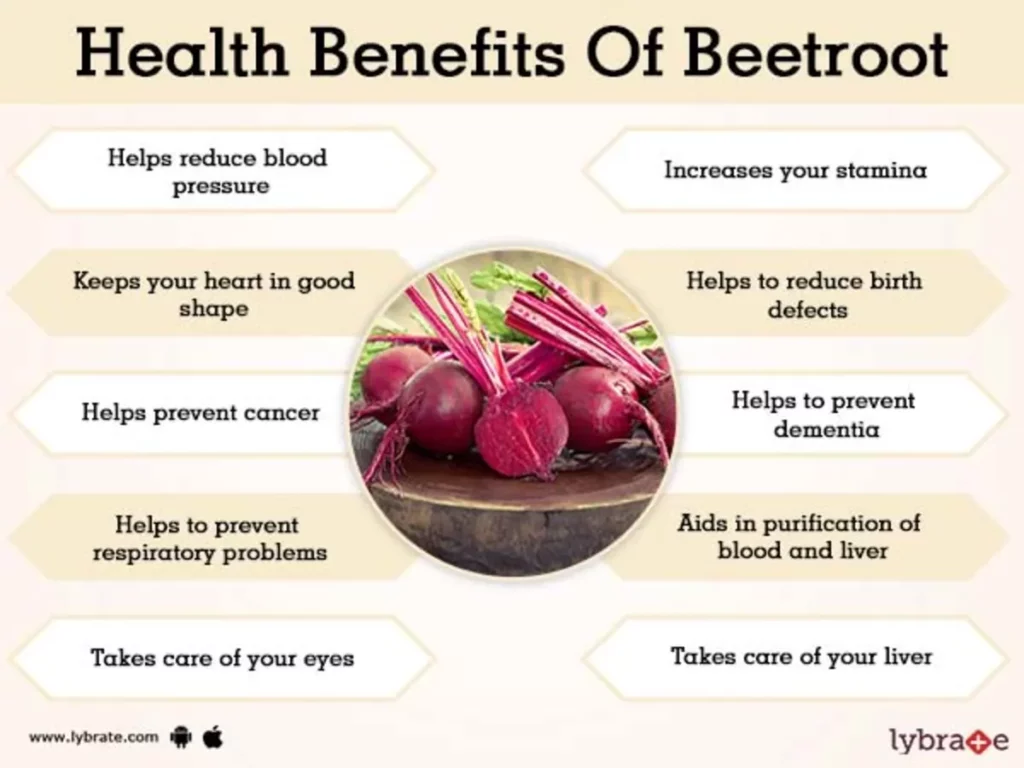
Beets are an extremely healthy root vegetable. Their roots are high in folate, nitrates, fiber, vitamins A and C, manganese, and potassium. They contribute to heart health and a strong immune system. However, they do contain lots of oxalates which contribute to kidney stones and gout, so it’s worth talking to your doctor if you’re at risk for such conditions.
Beets are most popular as a soup vegetable since they turn the soup red and add a delicious flavor. In Eastern Europe, different variations of beet soup exist which also contain tomatoes, carrots, onions, garlic, and dill. They can also be cooked and added to salads or be made into a vegetable smoothie. Pickling beets are also popular since they can be stored that way for years. Beet greens can be added to salad raw, or cooked into recipes that would normally contain spinach.
Growing Beets in Containers, Raised Beds, or Vertical Gardens
Luckily, it is super easy to grow beets in containers. However, if you do it this way, you should choose Beta vulgaris with a rounded root.
- Pots: Select pots for your beets at least 16 inches wide and 10 inches tall to allow for their large roots. Fill the pot with a well-draining light soil. Always make sure your pots have drainage holes in the bottom!
- Raised beds: you can also use raised beds to grow beets (just like strawberries). This makes it easier to pull weeds and harvest, since you don’t have to sit on the ground. You can also place weed-free soil into the bed.
- Vertical Growing: Beets can be grown vertically by stacking the containers, leaving space on the outside for the leaves and stalks to stick out. This allows you to maximize space by planting lots of beets in a small area.
So, how hard is it to grow your own beets?
Beets are one of the easiest root vegetables for gardeners! There are many ways to eat your homegrown beets and they preserve well too! You can even eat the whole plant from root to leaf, which you can’t say for many vegetables.
If you want to learn more, try looking up ways to plant beets vertically and find creative ways to preserve them. You can even ask local gardeners who have been doing it for years and see what works in your area and what doesn’t. Best of luck and happy gardening!
Frequently Asked Questions
Beets take roughly 55 to 70 days to grow from seeding to harvesting. The leaves are ready to eat 30 to 45 days after planting.
Which Season Do Beets Grow in Stardew Valley?
In the game Stardew Valley, beets grow in the fall and take 6 days from seeding to harvesting.
When Do I Grow Beets?
In colder regions, you can sow seeds in the ground 30 days before your local spring frost date. In warmer regions where there is little frost, you should grow them during the cooler seasons since they’re a cool-weather crop and they won’t survive the blistering summer heat.
Are Beets Easy to Grow?
Yes, they’re one of the easiest vegetables for beginners to grow.
How Do I Grow Beets From Scraps?
You can slice the bottom 2/3 of the beetroot off and leave a few inches of the stalks on top. After a few days, you’ll notice that the leaves are growing back. You won’t get another root but you will get more leaves. If you place it in water then make sure you change it every few days to prevent rotting.
How Do I Grow Big Beets?
The best way to grow large beetroots is to make sure they have the right nutrition, which in this case means adding fertilizer high in potassium and low in nitrogen.
